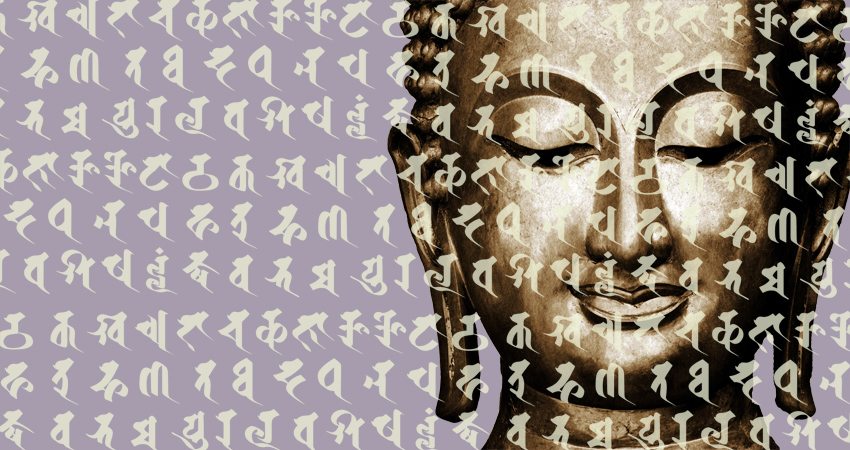While performing the shakyo exercise, if the concentration is on the accurate copying of a sacred text, and the entire body is functioning as one, the strokes just flow through you. It is almost as though you were not the creator, only the conduit through which they form. This continues one step further in Siddham, the sacred script used to transcribe Sanskrit, the so-called language of the gods. In India, religiously inclined people consider that the letters are divine, having been created originally by Brahma himself. Others who truly understand reject this explanation, and state instead that no one ever created the letters. They exploded into being from the void itself, before yin and yang had separated, when there was still no polarity.
Thinking of them in this way, they are as old as the universe itself. Thus, their use is a spiritual ordeal.
This sentiment has crossed the borders of India, and many people in other Asian countries practice shakyo with Siddham letters. They sometimes write out entire sutras or parts of sutras, which spiritual scholars originally wrote in Siddham, or they (symbolically) put their entire body and soul into the creation of just a single letter, a single sound, which contains all elements of the universe itself. The Mahavairocana or Cosmic Buddha, known in Japanese as Dainichi Nyorai, represents this concept iconographically in esoteric Buddhism. In Siddham, the individual letters embody all elemental principles. From the top to the bottom exists ether, wind, fire, water, and earth. The individual differences in the various letters are just their external forms. The substance of the letters, that essence behind and within them which gave them life, is unalterable. It is there, and it is always the same. Thus, all letters are the same, just as all humans are one. All sentient beings emerged from the same source, and they will return to it. Apparent differences are nothing more than shapes and forms. The essence of all things is the same, unperturbed and unalterable.
No matter how much one seems to have diverged from the path, they are never far from it. In fact, they are always on it, even though the deluded may think that they are lost. Thich Nhat Hanh wrote:
My path is the path of stopping, the path of enjoying the present moment. It is a path where every step brings me back to my true home. It is a path that leads nowhere. I am on my way home. I arrive at every step.”
Be here, in the present, and let art emerge on its own. The Siddham characters, thought to embody divine energy, are not considered to have been created by anyone, not even you, if you choose to pen one. For this reason, artists never sign calligraphic pieces featuring Siddham. From oṃ, the sacred syllable, to kan, which contains the essence of the Immovable One, Acala Vidyaraja (Fudo Myoo in Japanese), they embody both everything and nothing, for everything that exists emerged from the void.
